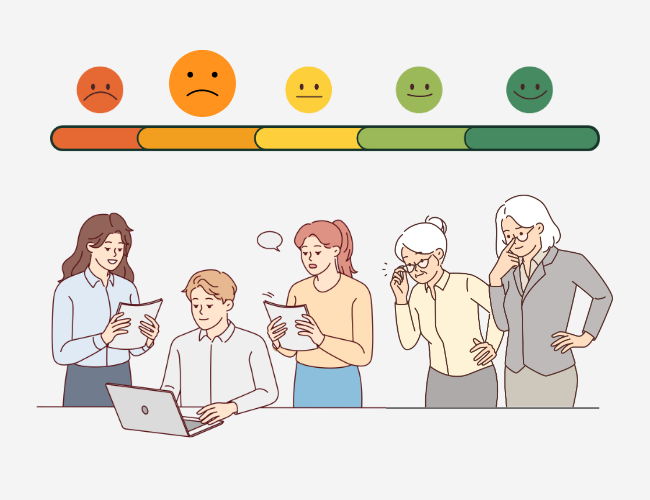As has been well discussed, the pandemic led many organizations to consider alternative work arrangements that break the mold of the standard five-day, 9-5 , 40-hour in-person setup.
Most of these alternative schedules (e.g., hybrid schedules, four-day workweeks, six-hour workdays, etc.) leave one component of the standard workday intact: the emphasis on a single, unrelenting, uninterrupted period of sustained work and productivity.
One arrangement, known as a split shift, allows workers to break up their workdays into two or more parts with at least two hours in between each shift (one-hour lunch breaks don’t count). For example, an employee may work from 9-2 and then from 5-8.
While split shift schedules are not frequently utilized in knowledge work, they have several considerable benefits that make them a worthy contender among the other alternative arrangements. At the same time, split shifts have unique drawbacks that employers must consider before testing them out.
Pros
Split Shifts Can Help Employees Recharge Their Cognitive Reservoirs
Most employees cannot sustain high levels of productivity throughout an uninterrupted workday. Researchers have found that after prolonged periods of work, employees experience what is known as the fatigue effect, which has been linked with decreases in productivity and engagement.
These results suggest that much of the standard workday is often used inefficiently. Split shifts could fix that. By providing employees with an extended period of time when they are not working, workers can recharge their cognitive reservoirs and prepare for the second round of work.
These mental breaks may be especially important for companies implementing a four-day workweek. To maintain a 40-hour workweek, these organizations often require employees to work 10 hours per day. With employees already struggling to work eight hours straight, productivity is likely to dwindle significantly during 10 consecutive hours of work without reprieve. An extended break could help resolve this issue.
Split Shifts Can Make Caregiving Easier
In many ways, the traditional workweek is not suited for caregiving. Phyllis Moen, a sociologist at the University of Minnesota, tells the New York Times, “It’s structured around the expectation that people don’t have a family.”
Part of the problem is that the regular workday runs right through the times when caregiving needs commonly arise. For example, school ends before the workday, making it difficult for parents to pick their kids up from school or be there for them when they get home.
Whether one is caring for a pet, child, or some other loved one, it’s difficult to put off their needs for eight or more hours straight. Split shifts provide a straightforward solution to this problem.
Split Shifts Can Reduce Commute Times
One of the main reasons employees don’t want to come into the office is the extra time it takes to commute. With an average commute time of 30 minutes in the car and 45 minutes on public transportation, the typical employee spends up to one and a half hours traveling on top of their eight-hour workday.
Part of what makes commutes so time-consuming is that most workers leave at around the same time, resulting in what is informally known as rush-hour. Split shifts can mitigate this problem. By leaving early, employees can avoid high-traffic times when heading home. If given the ability to adjust their start time, workers can miss out on the morning rush as well.
Split Shifts Can Make In-Person Work More Appealing
Some employers have encountered significant resistance as they try to bring employees back into the office. After years of getting to work from wherever they feel most comfortable, many employees aren’t ready to transition back to the workplace.
To offset this concern, many employers offer hybrid schedules where workers come in on some days and not others. For many workers, though, the problem may not be the number of days they have to come into the office but the number of consecutive hours they have to be there.
Insofar as their apprehensiveness is about the number of consecutive hours they have to spend in the office, hybrid workplaces will fail to make in-person work more palatable.
Split shifts can address this concern directly. By only requiring employees to come in for one of their shifts, employers can reduce their daily in-person commitments and enable them to come and go at times that are most convenient for their schedules and personal working styles. Collectively, this might make a return to the office seem less daunting.
Cons
Split Shifts Can Blur The Lines Between One’s Work And Personal Life
While split shifts can provide a much-needed break, they can also have the opposite effect, causing employees to feel like they are at work all the time. Switching from work mode to home mode takes time, and many employees may struggle to make the mental transition in the time allotted.
The urge to continue thinking about work is exacerbated by the fact that split-shift employees know they will be picking back up where they left off in just a few hours. Stuck in a waiting mode, they may keep thinking about the work they have ahead of them after their extended break is over.
The result of this is that some employees may feel like they are working all day, which can quickly lead to increased stress, anxiety, and burnout.
Split Shifts Can Complicate Messaging And Communication
To provide employees with added flexibility, employers implementing a split shift might allow each worker to split up their day in a way that best suits their personal needs and working habits. This approach can cause unexpected complications when it comes to communication and messaging.
Workers need to take their minds off work as fully as possible to get the most out of their breaks. Messages from other employees can quickly dissolve any temporary separation they had created. Unfortunately, workers may struggle to keep everyone’s shifts straight. As a result, they might unintentionally message an employee on break. This might also happen intentionally when a worker needs to send a message during normal working hours.
Unless companies implement clear communication norms and establish systems that make it easier for employees to determine when they can send messages and when they are expected to respond, split shifts are unlikely to make a positive impact.
Takeaway
The split shift represents an important addition to the standard array of alternative arrangements. By allowing workers to break up their days into multiple smaller working periods, split shifts enable employees to work when they are most productive while making in-person work a smaller obstacle to addressing non-work-related needs. However, it can come with significant drawbacks. As a result, it should be approached with caution.
Companies looking to try out split shifts may want to avoid making it a requirement for all workers. While some employees will thrive in this arrangement, many may find they are worse off. Most companies are likely to have a mix of both workers, meaning it may not have an overall positive effect when implemented universally.












